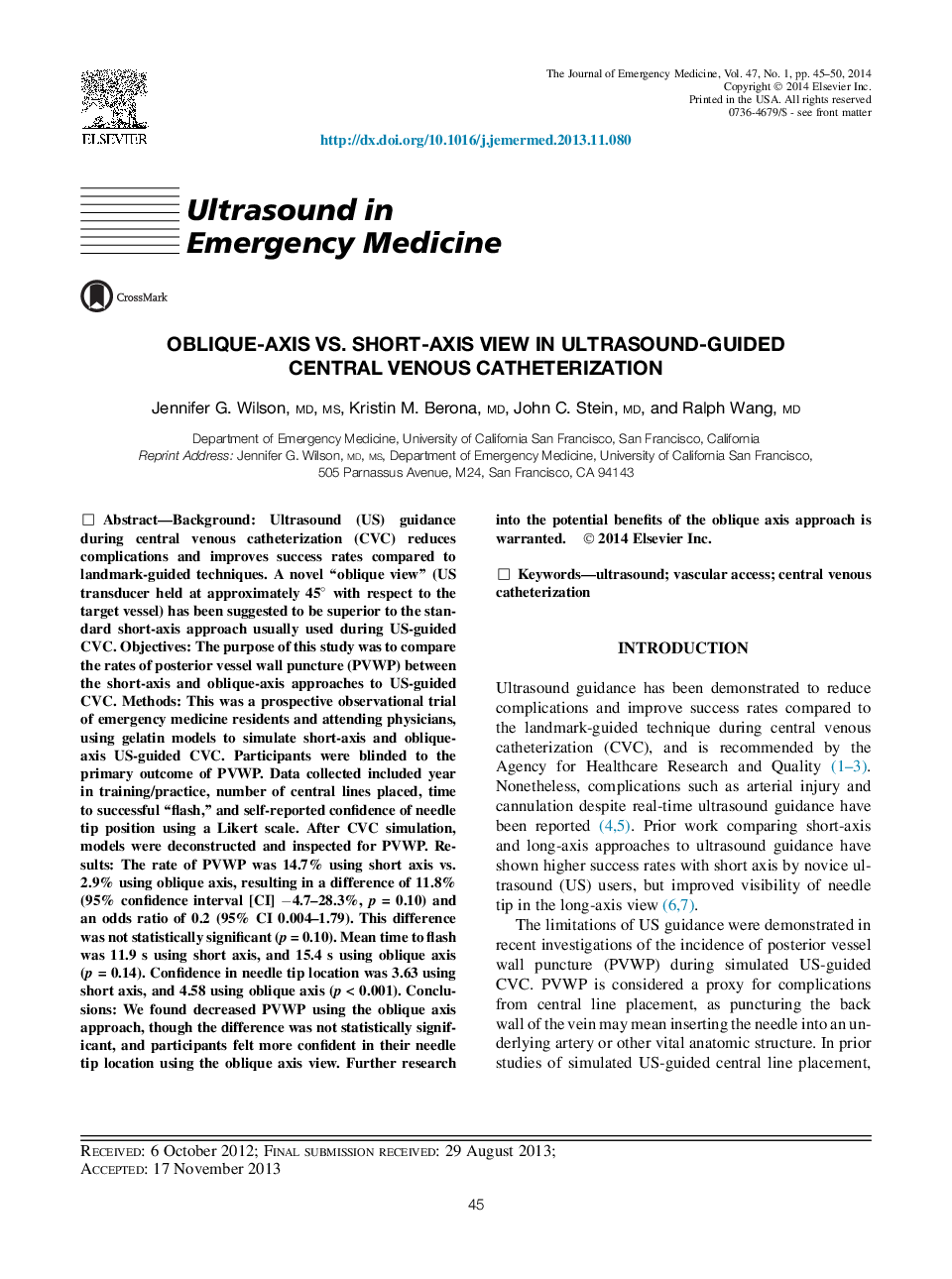| کد مقاله | کد نشریه | سال انتشار | مقاله انگلیسی | نسخه تمام متن |
|---|---|---|---|---|
| 3246569 | 1589135 | 2014 | 6 صفحه PDF | دانلود رایگان |
BackgroundUltrasound (US) guidance during central venous catheterization (CVC) reduces complications and improves success rates compared to landmark-guided techniques. A novel “oblique view” (US transducer held at approximately 45° with respect to the target vessel) has been suggested to be superior to the standard short-axis approach usually used during US-guided CVC.ObjectivesThe purpose of this study was to compare the rates of posterior vessel wall puncture (PVWP) between the short-axis and oblique-axis approaches to US-guided CVC.MethodsThis was a prospective observational trial of emergency medicine residents and attending physicians, using gelatin models to simulate short-axis and oblique-axis US-guided CVC. Participants were blinded to the primary outcome of PVWP. Data collected included year in training/practice, number of central lines placed, time to successful “flash,” and self-reported confidence of needle tip position using a Likert scale. After CVC simulation, models were deconstructed and inspected for PVWP.ResultsThe rate of PVWP was 14.7% using short axis vs. 2.9% using oblique axis, resulting in a difference of 11.8% (95% confidence interval [CI] −4.7–28.3%, p = 0.10) and an odds ratio of 0.2 (95% CI 0.004–1.79). This difference was not statistically significant (p = 0.10). Mean time to flash was 11.9 s using short axis, and 15.4 s using oblique axis (p = 0.14). Confidence in needle tip location was 3.63 using short axis, and 4.58 using oblique axis (p < 0.001).ConclusionsWe found decreased PVWP using the oblique axis approach, though the difference was not statistically significant, and participants felt more confident in their needle tip location using the oblique axis view. Further research into the potential benefits of the oblique axis approach is warranted.
Journal: The Journal of Emergency Medicine - Volume 47, Issue 1, July 2014, Pages 45–50
